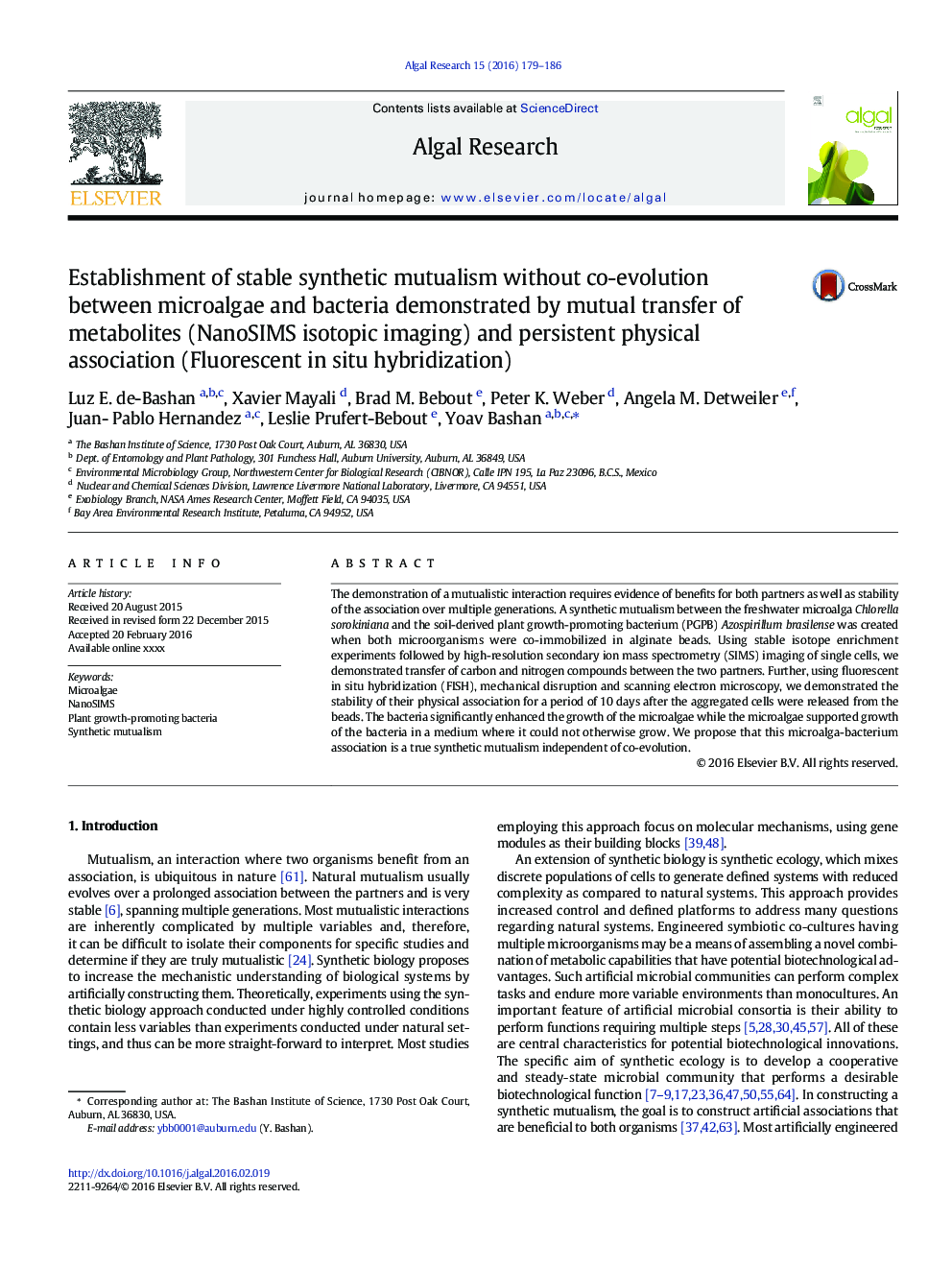| Article ID | Journal | Published Year | Pages | File Type |
|---|---|---|---|---|
| 8087257 | Algal Research | 2016 | 8 Pages |
Abstract
The demonstration of a mutualistic interaction requires evidence of benefits for both partners as well as stability of the association over multiple generations. A synthetic mutualism between the freshwater microalga Chlorella sorokiniana and the soil-derived plant growth-promoting bacterium (PGPB) Azospirillum brasilense was created when both microorganisms were co-immobilized in alginate beads. Using stable isotope enrichment experiments followed by high-resolution secondary ion mass spectrometry (SIMS) imaging of single cells, we demonstrated transfer of carbon and nitrogen compounds between the two partners. Further, using fluorescent in situ hybridization (FISH), mechanical disruption and scanning electron microscopy, we demonstrated the stability of their physical association for a period of 10Â days after the aggregated cells were released from the beads. The bacteria significantly enhanced the growth of the microalgae while the microalgae supported growth of the bacteria in a medium where it could not otherwise grow. We propose that this microalga-bacterium association is a true synthetic mutualism independent of co-evolution.
Related Topics
Physical Sciences and Engineering
Energy
Renewable Energy, Sustainability and the Environment
Authors
Luz E. de-Bashan, Xavier Mayali, Brad M. Bebout, Peter K. Weber, Angela M. Detweiler, Juan- Pablo Hernandez, Leslie Prufert-Bebout, Yoav Bashan,
